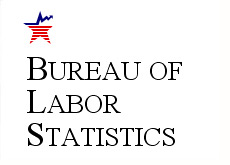U-6 Unemployment Rate Was 14.8% in February
 Let's "keep it real" for a minute.
Let's "keep it real" for a minute.The "official" unemployment rate that is released by the US government every month is complete garbage.
The "official" unemployment rate dramatically understates the true number of unemployed (and underemployed) people.
The Bureau of Labor Statistics releases six different numbers every month - U-1, U-2, U-3, U-4, U-5 and U-6.
U-3 is the "official unemployment rate". This number (as you now probably know), came in at 8.1% for February 2009.
Everyone freaked out over this number, noting that it was much higher than the 7.6% unemployment number in January and the 7.2% unemployment number in December.
In actuality, the unemployment rate was much higher. If you want to be truthful about the employment situation in the United States, then you need to refer to U-6.
This number was 14.8% in February 2009.
These aren't numbers that I am just grabbing out of the air - these are taken straight from the Bureau of Labor Statistics web site.
So who does the 14.8% number include that the 8.1% number (for February 2009) does not?
How about "discouraged workers"? These are people who have stopped looking for work because they feel that the effort is a waste, and that there are no jobs available for them. Discouraged workers have looked for a job sometime in the past 12 months but have not been able to find one.
If we added "discouraged workers" to the 8.1% "official unemployment number" that was quoted for February of 2009, then we are left with a number of 8.5%.
Now, how about "marginally attached workers"? "Marginally attached workers" include those who are not currently looking for work, but have attempted to look for a job sometime in the recent past and would take a job if offered. "Marginally attached workers" include "discouraged workers".
"Marginally attached workers" are not included in the "official" unemployment number because they have not looked for work in the past 4 weeks.
If we add "marginally attached workers" to the 8.1% "official unemployment" number for February, then we are left with 9.3%.
The U-6 number (which was 14.8% in February of 2009), also includes those people who have been forced to take part-time jobs for "economic reasons".
These are people who want (and need) full-time work, but aren't able to find it, so they take a part-time job instead.
Should we exclude people from the "official" unemployment numbers that want a job but can't find work?
Should we exclude people who have given up on finding a job completely?
Should we exclude people who are willing and able to work full-time, but are forced to take part-time jobs because of the poor economy?
I don't think so either, and it's interesting how the federal government massages the unemployment numbers to make them look much better than they actually are.
Some people look at the current "unemployment rate" of 8.1% in the United States and note that "things were much worse during the Great Depression".
Here's the thing though - the "official" unemployment rate is calculated differently now than it was back then.
The oft-quoted unemployment rate of 24.75% in 1933 would be a great deal lower if it was calculated according to today's "official" formula - probably 5-10% lower.
Things were certainly worse in 1933 than they are now - but there weren't three times as many unemployed and underemployed people.
--
In the end, when it comes to the "official" unemployment numbers - don't believe what you are being told. Things are actually much worse than what the U.S. government is reporting.
Filed under: The Economic Meltdown



